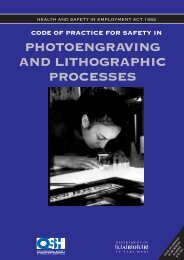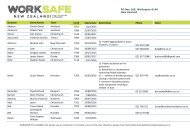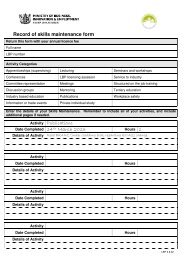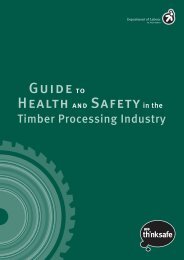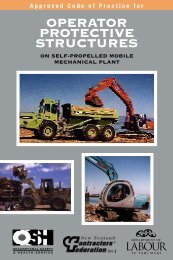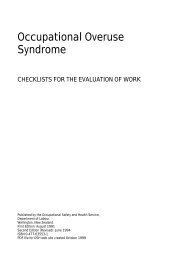Temporary Impairment Dealing with an ... - Business.govt.nz
Temporary Impairment Dealing with an ... - Business.govt.nz
Temporary Impairment Dealing with an ... - Business.govt.nz
Create successful ePaper yourself
Turn your PDF publications into a flip-book with our unique Google optimized e-Paper software.
Who is responsible for keeping workplaces healthy<br />
<strong>an</strong>d safe?<br />
The Health <strong>an</strong>d Safety in Employment Act requires employers <strong>an</strong>d<br />
employees to maintain safe working environments, build good-faith<br />
relationships, <strong>an</strong>d implement ‘best practice’ to protect health <strong>an</strong>d<br />
safety in the workplace.<br />
The onus is on the employer to have a proactive safety <strong>an</strong>d health<br />
system in place that provides opportunities for employee involvement.<br />
But the employer is required to deal <strong>with</strong> what she or he c<strong>an</strong><br />
reasonably be expected to know about, not to have eyes in the<br />
back of the head or the ability to read minds.<br />
Most employers w<strong>an</strong>t to know as soon as possible that <strong>an</strong> employee<br />
has become a hazard to themselves or others. Any such report should<br />
be treated at face value <strong>an</strong>d investigated. Open communication about<br />
temporary impairment will help to ensure it is resolved, even if there<br />
is disagreement on the cause of the problem.<br />
Identifying hazards is more th<strong>an</strong> just looking at isolated processes<br />
or activities. It requires assessing <strong>an</strong>d m<strong>an</strong>aging the whole work<br />
environment, including the people in the workplace, <strong>an</strong>d how they<br />
react <strong>an</strong>d interact.<br />
Thus the employer <strong>an</strong>d employees should work together to m<strong>an</strong>age<br />
hazards by assessing:<br />
• the skill <strong>an</strong>d knowledge of employees<br />
• the supervision they are given<br />
• the dem<strong>an</strong>ds of workloads<br />
• employees’ access to assist<strong>an</strong>ce.<br />
The level of vigil<strong>an</strong>ce required depends on the nature of the work<br />
<strong>an</strong>d the potential consequences of impairment-related error. For<br />
example, higher st<strong>an</strong>dards will be expected in the forestry industry<br />
th<strong>an</strong> in a low-risk office.<br />
5


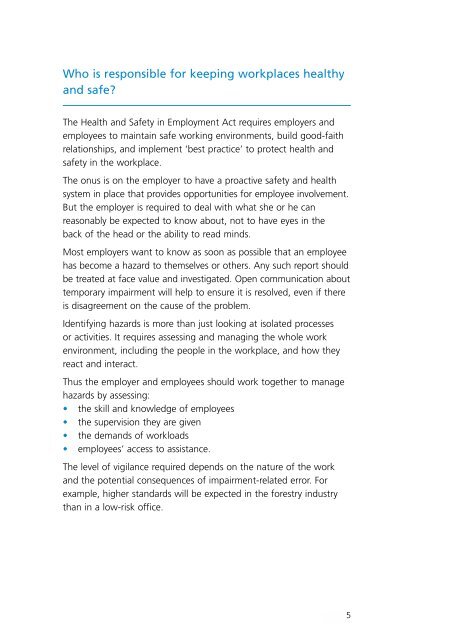

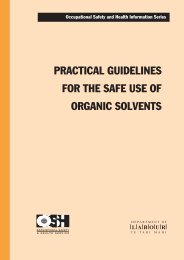
![Task analysis worksheet [161 KB PDF] - Business.govt.nz](https://img.yumpu.com/51400981/1/190x135/task-analysis-worksheet-161-kb-pdf-businessgovtnz.jpg?quality=85)

